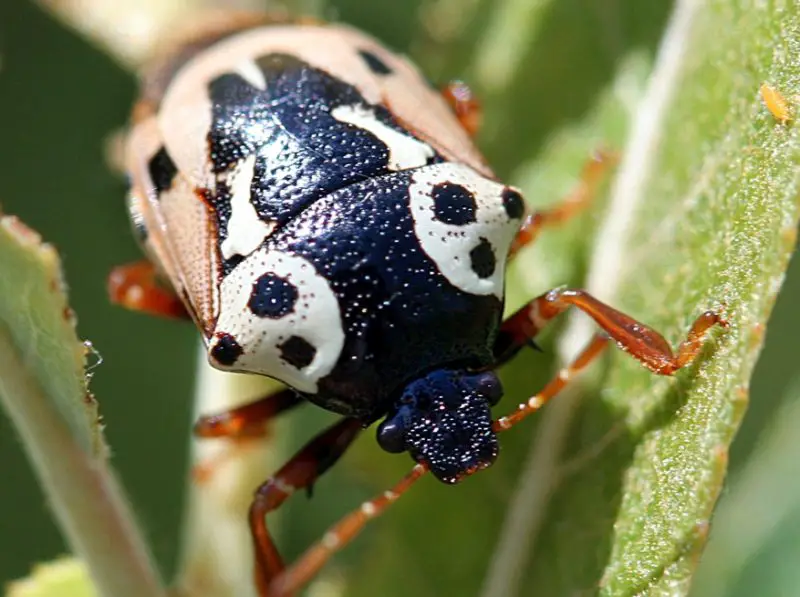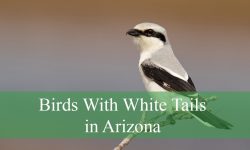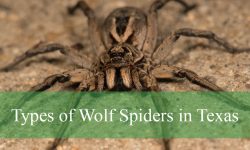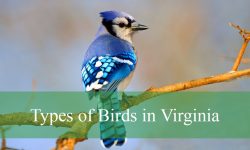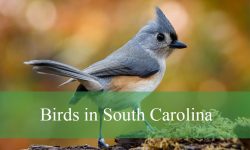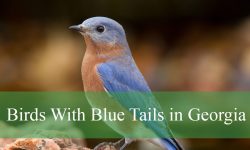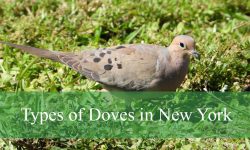Across Texas’ diverse terrain, countless species of stink bugs quietly assert their presence. These insects, collectively known as stink bugs, exhibit a variety of colors, patterns, and behaviors. Whether notorious pests that devastate crops or beneficial predators that strengthen vegetation, each contributes uniquely to the complexity of local ecosystems.
As we move through the kingdom of Texas stink bugs, our exploration will shed light on their unique identities, preferred habitats, and key roles in nature. Join us on this expedition to explore the world of 18 different types of stink bugs in Texas.
Different Types of Stink Bugs in Texas
Harlequin Bug
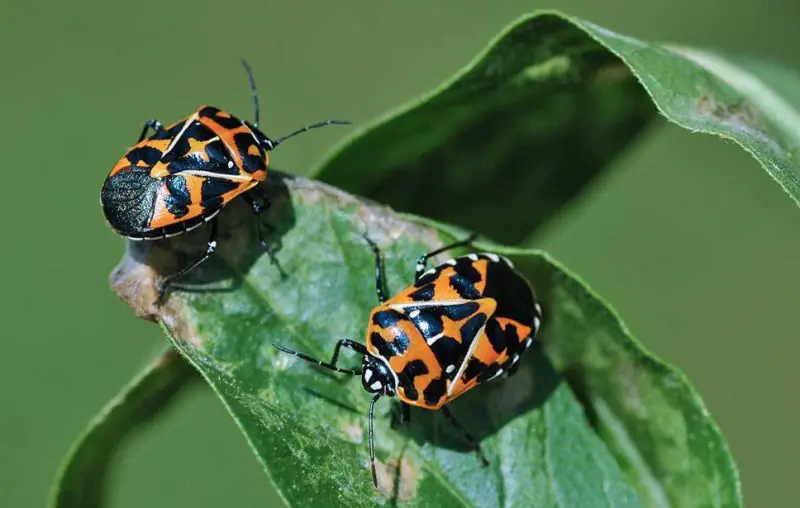
The Harlequin Bug (Murgantia histrionica) boasts a smooth body with a shield-like outline, brightly marked in mostly shiny black, reddish-orange, and white, or primarily orange hues. Also known as the Calico Bug and FireBug, this species is common in Texas gardens, fields, and roadsides, particularly visible during spring and summer.
Feeding on plants in the cabbage and tropical trees and bushes in the caper family, the Harlequin Bug is often considered a pest. Adults of this species are frequently found mating on plants, connected end to end. Their unique barrel-shaped black and white eggs are often discovered on plants, adding a distinctive aspect to their reproductive behavior.
Mormidea Lugens
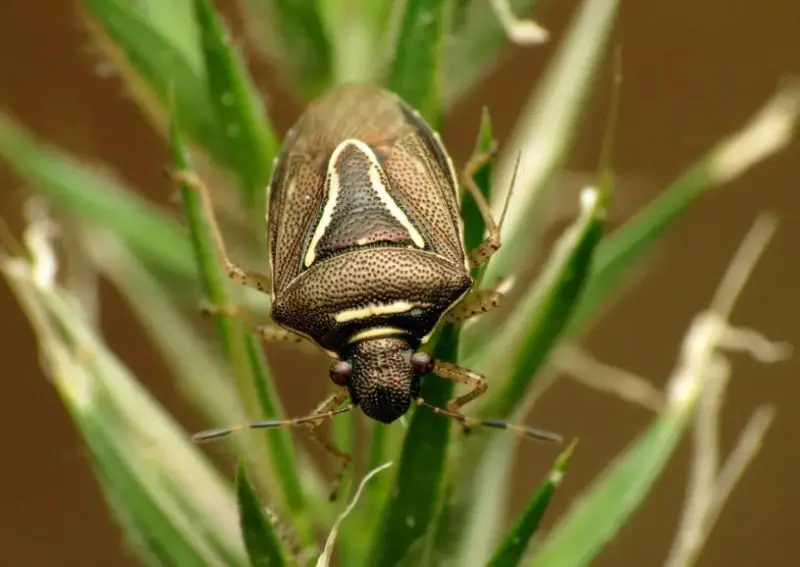
Mormidea Lugens, a small-sized stink bug, boasts identifying features such as a bronze and black coloration with a tannish-white V-shaped mark on its shield. Its legs are characterized by a yellowish-white hue. Surprisingly, this stink bug spans its habitat from the Caribbean up to Texas, showcasing its adaptability across diverse regions.
Preferential to grassy environments, Mormidea Lugens can also be spotted on various other plants. Its dietary preferences include Timothy Sedges and wide-leaved spiderwort.
Rice Stink Bug
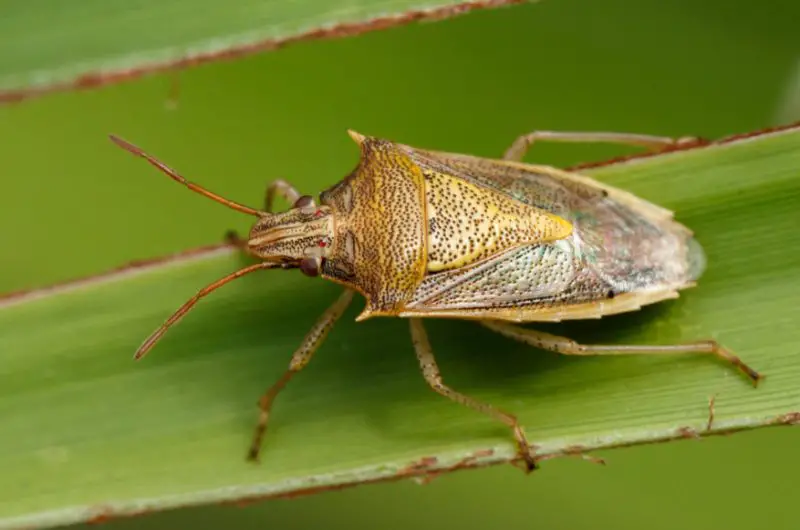
The Rice Stink Bug (Oebalus pugnax) is characterized by its narrow shield in a yellowish straw color, featuring sharp points on the corners and a distinctive yellow triangle at the center. Some may display gray coloring near the triangle, while others have a darker brown hue. True to its name, this stink bug is a notorious pest of rice crops.
Feeding on rice, they inflict damage to developing seed heads, leaving empty shells or shriveled kernels. This destruction not only impacts the crop yield but also facilitates the spread of microorganism diseases, leading to additional losses. Additionally, Rice Stink Bugs target crops with tiny seeds like sorghum, oat, barley, and wheat, while also inhabiting wild grasses such as barnyard grass, Johnson Grass, and sedge. Renowned for their remarkable mobility, these insects move in large masses, swiftly traversing fields in search of more delectable food sources.
Black Stink Bug
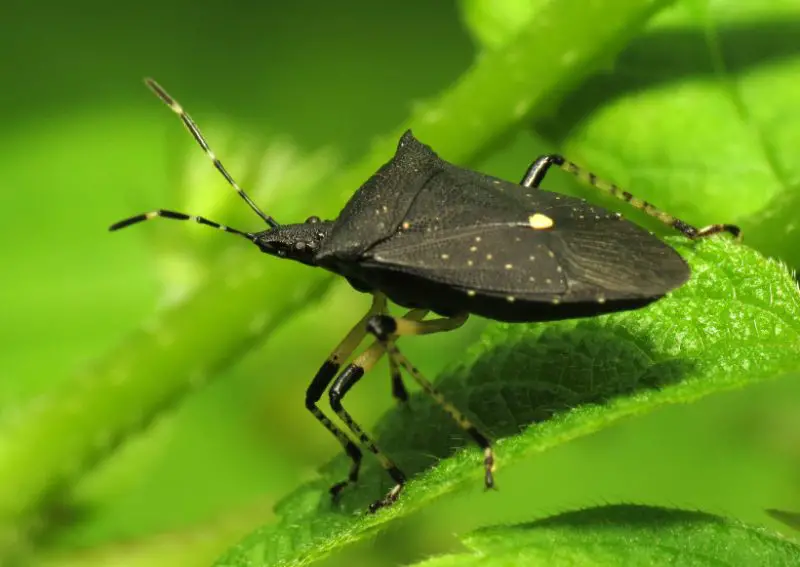
The Black Stink Bug (Proxys punctulatus) is easily identified by its black color, black and cream legs, and sharply pointed shoulders that extend forward. With one distinctive white spot in the center of the shield, this species, fortunately, does not seem to cause damage to crops in Texas.
Surprisingly, they play a beneficial role by helping to deter pests in farm fields, particularly foraging for insect larvae on cotton, soybean, and citrus fields. While they also feed on plant juices, their populations remain low, resulting in minimal damage to plants. During winter, these stink bugs can be found under leaf litter or inside logs, hibernating together for warmth.
Florida Predatory Stink Bug
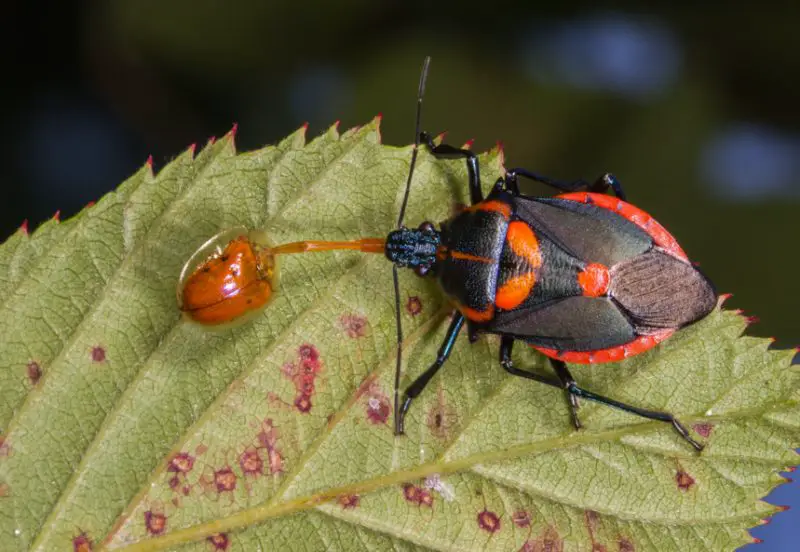
The Florida Predatory Stink Bug (Euthyrhynchus floridanus) showcases varying colors, from bluish-black to purplish-brown bodies, adorned with red or reddish-orange spots on the sides and top of the shield. Equipped with short and thick beak-like mouthparts, this species is native to the hottest regions of Texas, relying on warmth throughout the year for survival.
Considered beneficial to plants and crops, these carnivorous stink bugs feed on various pest insects. Interestingly, the Florida Predatory Stink Bug sets itself apart by hunting in packs of up to twelve individuals. Caution is advised not to disturb them, as they contribute significantly to pest control in their native habitat.
Say’s Stink Bug
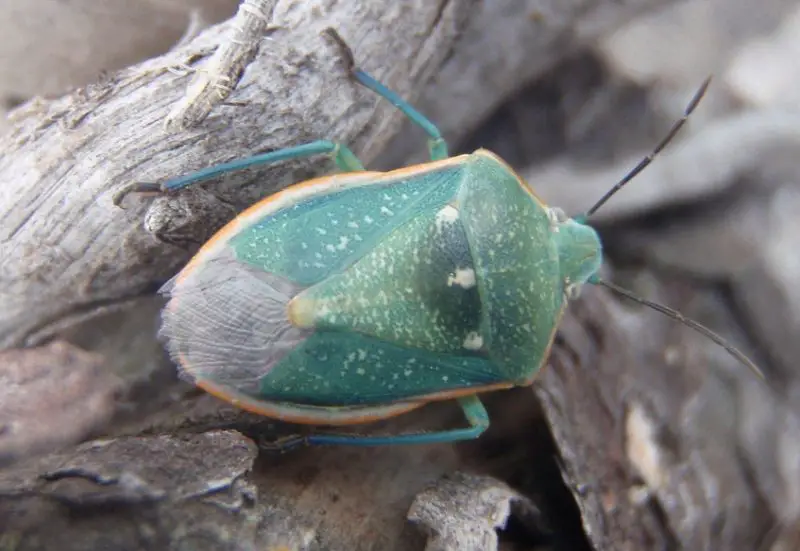
The Say’s Stink Bug (Chlorochroa sayi) showcases a diverse color palette throughout the year—dark green in spring, light green in midsummer, and olive to reddish-brown in fall and winter. Recognizable by three raised orange-yellowish or whitish spots at the top middle part of the shield and numerous irregular, smooth, white spots scattered on the base of forewings, this species thrives in various habitats across Texas.
From coastal plains to foothills and mountains, the Say’s Stink Bug can be found from spring through late fall. While it feeds on a wide variety of plants, it has occasionally been considered a pest, targeting crops such as alfalfa, asparagus, beans, cotton, peas, sunflowers, and oats.
Brown Marmorated Stink Bug
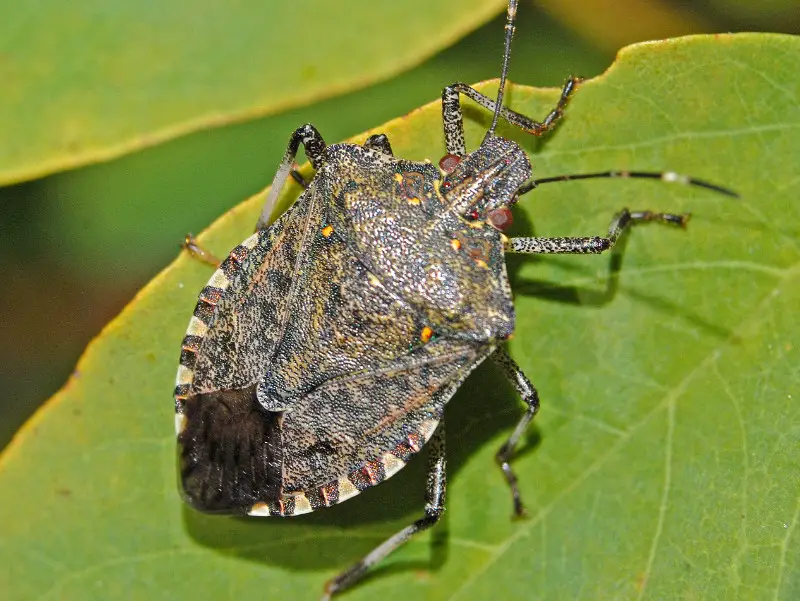
Though colors might vary, the Brown Marmorated Stink Bug (Halyomorpha Halys) has distinctive features, including a brown top and a creamy yellowish brown underbelly. This insect is well-known in Texas and may be identified by its blunt head, which is ornamented with pale rings on each leg and dark and light bands on the antennae.
Arriving in a shipping container from China or Japan, it most likely originated in Allentown, Pennsylvania in 1998. It may generate five generations a year, thriving in warm climates and favoring fields for agriculture and gardens. It causes pitting and deterioration in fruits and vegetables and feeds on more than 100 different types of plants.
In the fall, they seek cover indoors; they do not pose a threat to people or animals, but they do emit an unpleasant smell.
Green Burgundy Stink Bug
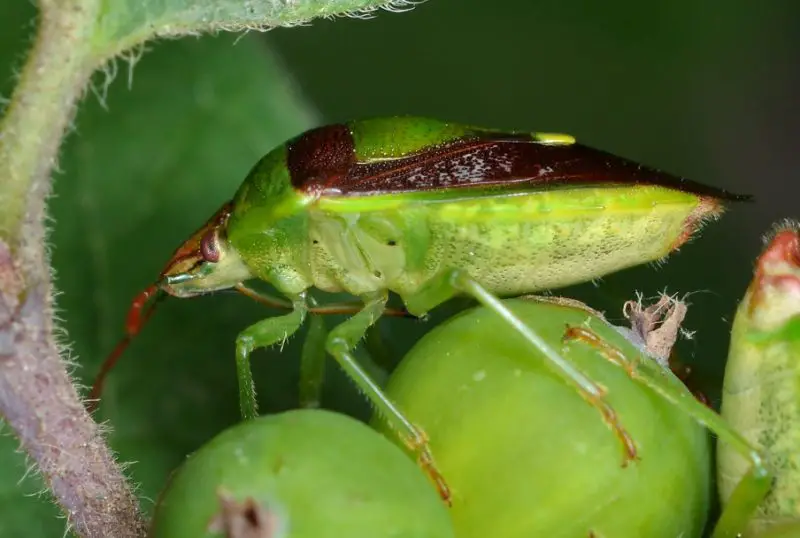
The front of the Green Burgundy Stink Bug (Banasa dimiata) is pale green or yellow, while the back is dark green or reddish-brown, giving it a distinctive appearance. There may or may not be black specks down the sides of the abdomen. This stink bug is widespread and common in Texas. It feeds on a variety of trees and shrubs, including dogwoods, honeysuckles, and fruit trees, from spring to fall.
Adults seek refuge in barns or other accessible area surrounding homes during the winter months. This species, like many others, is frequently targeted by parasitic wasps and flies.
Blue Shieldbug
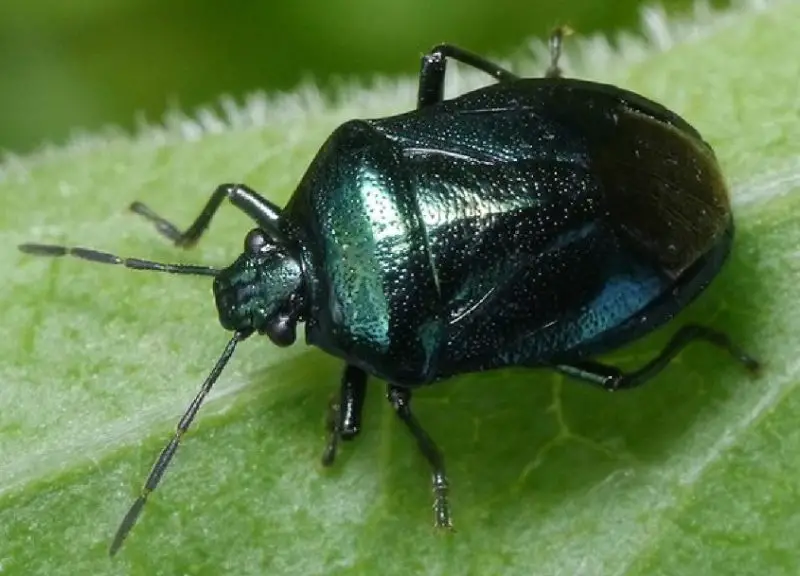
The metallic blue-green shield and dark wing membrane of the Blue Shieldbug (Zicrona Caerulea) are its distinguishing characteristics. It looks red with black markings during the nymph stage, resembling ladybugs but with larger legs and antennae. They resemble beetles and are regarded as the most beautiful stink bugs in Texas. Blue shieldbugs are found in low vegetation areas such as moist grassland and woodland borders. Their main food source is beetle, caterpillar, moth, and plant larvae. They are a fascinating sight in their native habitat because of their vivid color and distinctive features.
Rough Stink Bug
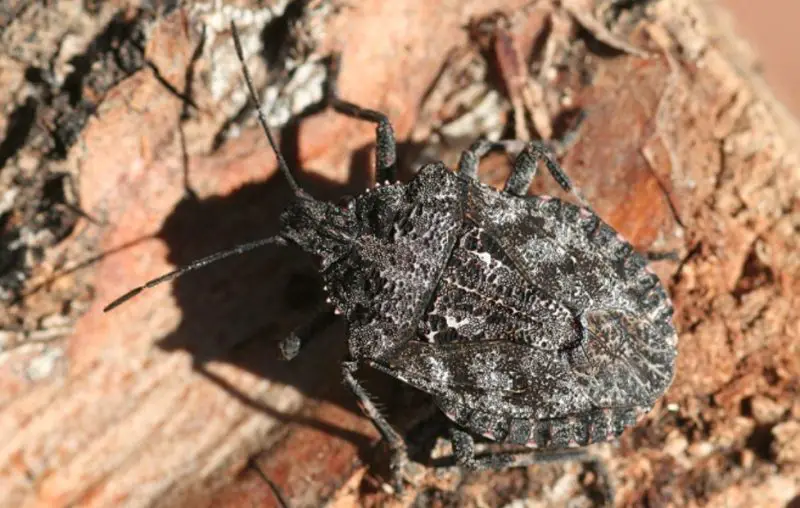
The Rough Stink Bug (Brochymena Quadripustulata) exhibits a variable color range, including brown, gray, and blackish gray, adorned with stripes and orange spots, earning it the alternative name of Four-Humped Stink Bug. This species is among the more prevalent stink bugs in Texas, notorious for consuming 18 different plant varieties, posing a threat to crops like corn, apples, and soybeans.
Identifiable by the leaf destruction, scarring, and pitting on fruits or vegetables caused by their feeding, Rough Stink Bugs tend to infest crops up to 40 feet from the field’s edge, known as the edge effect. While preferring warmer weather, they have adapted to survive in cooler temperatures. If these stink bugs enter homes, they cannot feed or reproduce. As temperatures rise, they typically seek to return outdoors.
Spined Soldier Bug
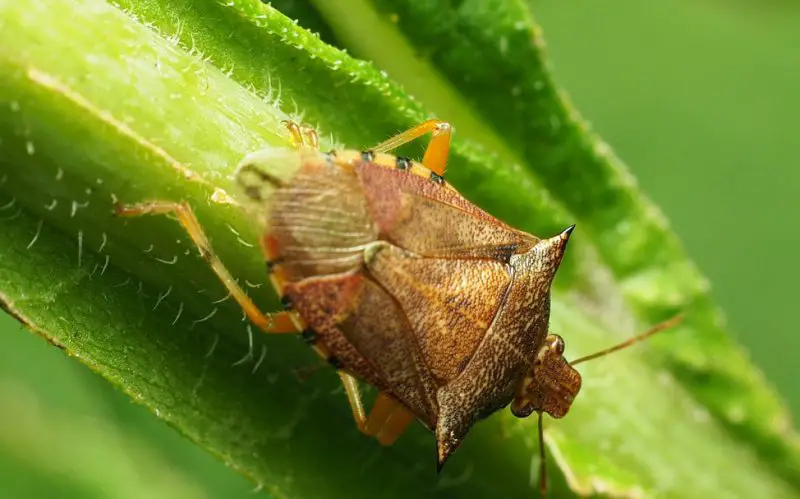
The Spined Soldier Bug (Podisus Maculiventris) is easily identifiable by its brown color with a distinctive spine on each shoulder pointing outward, not forward. Its legs are yellowish in appearance. Unlike its stink bug counterparts, the Spined Soldier Bug is a beneficial insect, serving as a natural predator by consuming various harmful bugs. Living up to its name, these insects act as protectors in gardens, making them a welcomed guest in Texas.
While common throughout the state, they particularly target caterpillars of the gypsy moth and larvae of several beetles considered pests by gardeners. Additionally, the Spined Soldier Bug feeds on some plant juices, but fortunately, it does not pose any harm to plants, making it a valuable ally in natural pest control.
Black-and-Red Stink Bug

The Black-and-Red Stink Bug (Cosmopepla lintneriana) is easily identified by its black body adorned with two spots of orange or red on the lower abdomen and a band of orange or red across the upper abdomen. Also known as the Wee Harlequin Bug and Twice-Stabbed Stink Bug, this species is widespread, with adults often spotted among leaf litter early in the year, especially after snow melts on warm spring days.
Feeding on various plants like milk thistle, echinacea, asparagus, oats, mint, and goldenrod, the Black-and-Red Stink Bug is notably the most common stink bug found on the milkweed plant. Its vibrant colors and distinctive markings make it a noticeable presence in diverse habitats.
Two-Spotted Stink Bug
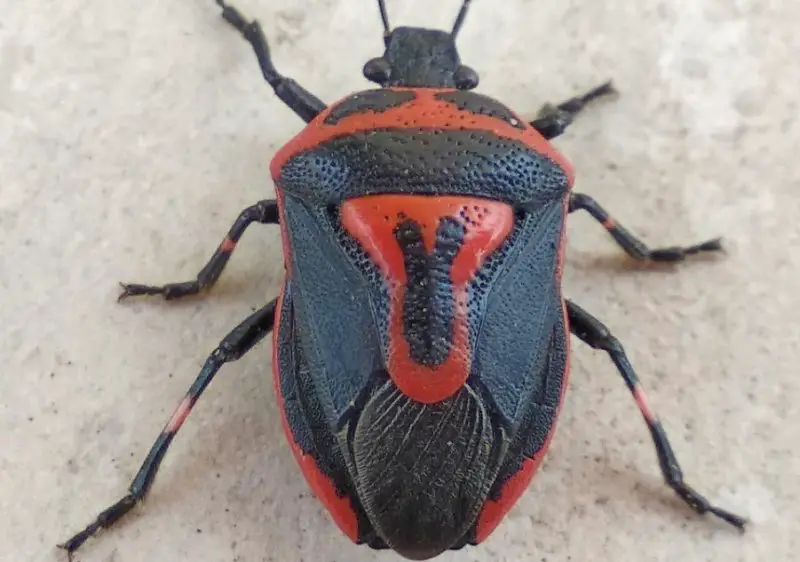
The Two-Spotted Stink Bug (Perillu bioculatus) presents a diverse color palette, ranging from black and red, orange, yellowish orange, to reddish tan and creamy white. Its distinguishing features include a keyhole mark on the back and two black spots on the upper part of the shield, along with legs sporting a whitish stripe in the middle. Commonly known as the Double-Eyed Soldier Bug, this species can be spotted foraging for prey on plants, aided by its two spots and keyhole mark for quick identification.
Highly beneficial in Texas, the Two-Spotted Stink Bug acts as a natural predator, targeting harmful bugs such as stink bugs, beetles, and caterpillars throughout its larval and adult stages. It is crucial to avoid harming these helpful insects, as their robust beaks enable them to pierce even the hard shell of a hazelnut. Employing a harpoon-like tipped beak, they inject digestive enzymes into their prey, paralyzing and subsequently consuming the digested insides. The Two-Spotted Stink Bug stands out as an essential ally in protecting crops and plants from destructive pests.
Anchor Stink Bug
